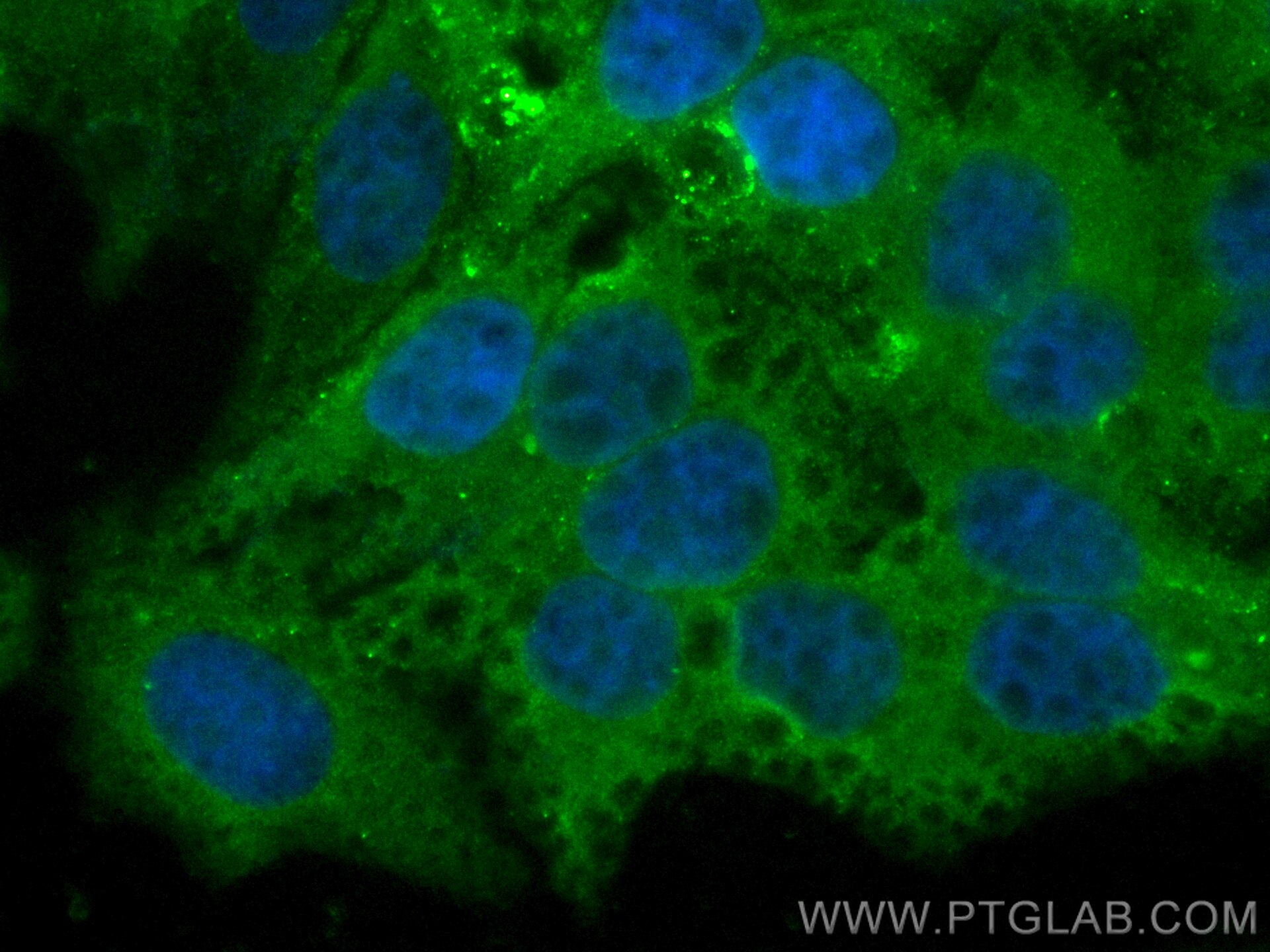SEC61B Polyklonaler Antikörper
SEC61B Polyklonal Antikörper für IF/ICC
Wirt / Isotyp
Kaninchen / IgG
Getestete Reaktivität
human, Maus, Ratte
Anwendung
IF/ICC
Konjugation
CoraLite® Plus 488 Fluorescent Dye
Kat-Nr. : CL488-15087
Synonyme
Geprüfte Anwendungen
| Erfolgreiche Detektion in IF/ICC | HepG2-Zellen |
Empfohlene Verdünnung
| Anwendung | Verdünnung |
|---|---|
| Immunfluoreszenz (IF)/ICC | IF/ICC : 1:50-1:500 |
| It is recommended that this reagent should be titrated in each testing system to obtain optimal results. | |
| Sample-dependent, check data in validation data gallery | |
Produktinformation
CL488-15087 bindet in IF/ICC SEC61B und zeigt Reaktivität mit human, Maus, Ratten
| Getestete Reaktivität | human, Maus, Ratte |
| Wirt / Isotyp | Kaninchen / IgG |
| Klonalität | Polyklonal |
| Typ | Antikörper |
| Immunogen | SEC61B fusion protein Ag7169 |
| Vollständiger Name | Sec61 beta subunit |
| Berechnetes Molekulargewicht | 10 kDa |
| Beobachtetes Molekulargewicht | 10-15 kDa |
| GenBank-Zugangsnummer | BC001734 |
| Gene symbol | SEC61B |
| Gene ID (NCBI) | 10952 |
| Konjugation | CoraLite® Plus 488 Fluorescent Dye |
| Excitation/Emission maxima wavelengths | 493 nm / 522 nm |
| Form | Liquid |
| Reinigungsmethode | Antigen-Affinitätsreinigung |
| Lagerungspuffer | PBS with 50% glycerol, 0.05% Proclin300, 0.5% BSA |
| Lagerungsbedingungen | Bei -20°C lagern. Vor Licht schützen. Nach dem Versand ein Jahr stabil. Aliquotieren ist bei -20oC Lagerung nicht notwendig. 20ul Größen enthalten 0,1% BSA. |
Hintergrundinformationen
The heteromeric SEC61 complex is composed of alpha, beta and gamma subunits. Oligomers of the SEC61 complex form a transmembrane channel where proteins are translocated across and integrated into the ER membrane (PMID: 10212142). SEC61B is the beta subunit of the SEC61 complex. It has been reported that SEC61B facilitates cotranslational protein transport and interacts with the signal peptidase during translocation (PMID: 9585408).
Protokolle
| PRODUKTSPEZIFISCHE PROTOKOLLE | |
|---|---|
| IF protocol for CL Plus 488 SEC61B antibody CL488-15087 | Protokoll herunterladen |
| STANDARD-PROTOKOLLE | |
|---|---|
| Klicken Sie hier, um unsere Standardprotokolle anzuzeigen |


